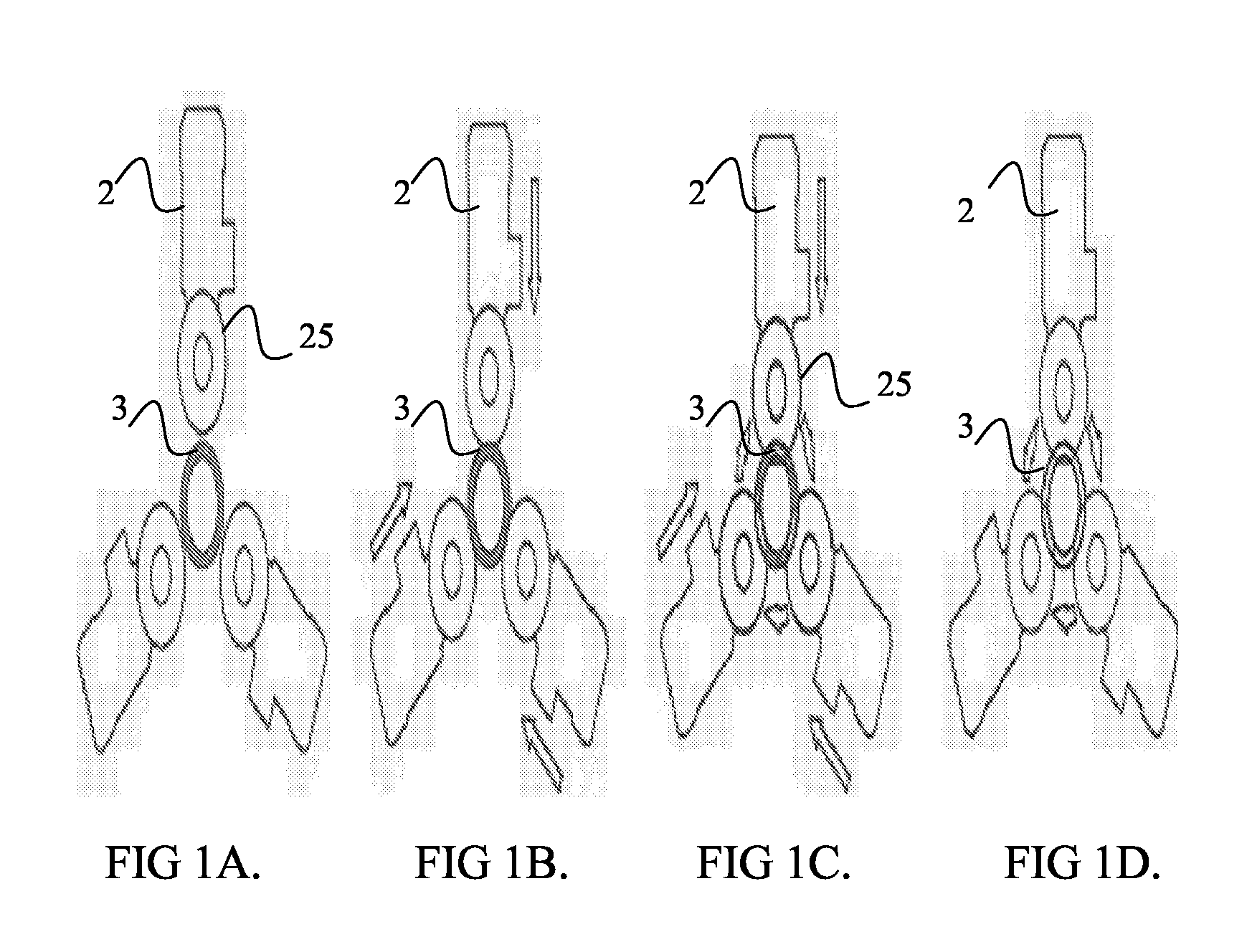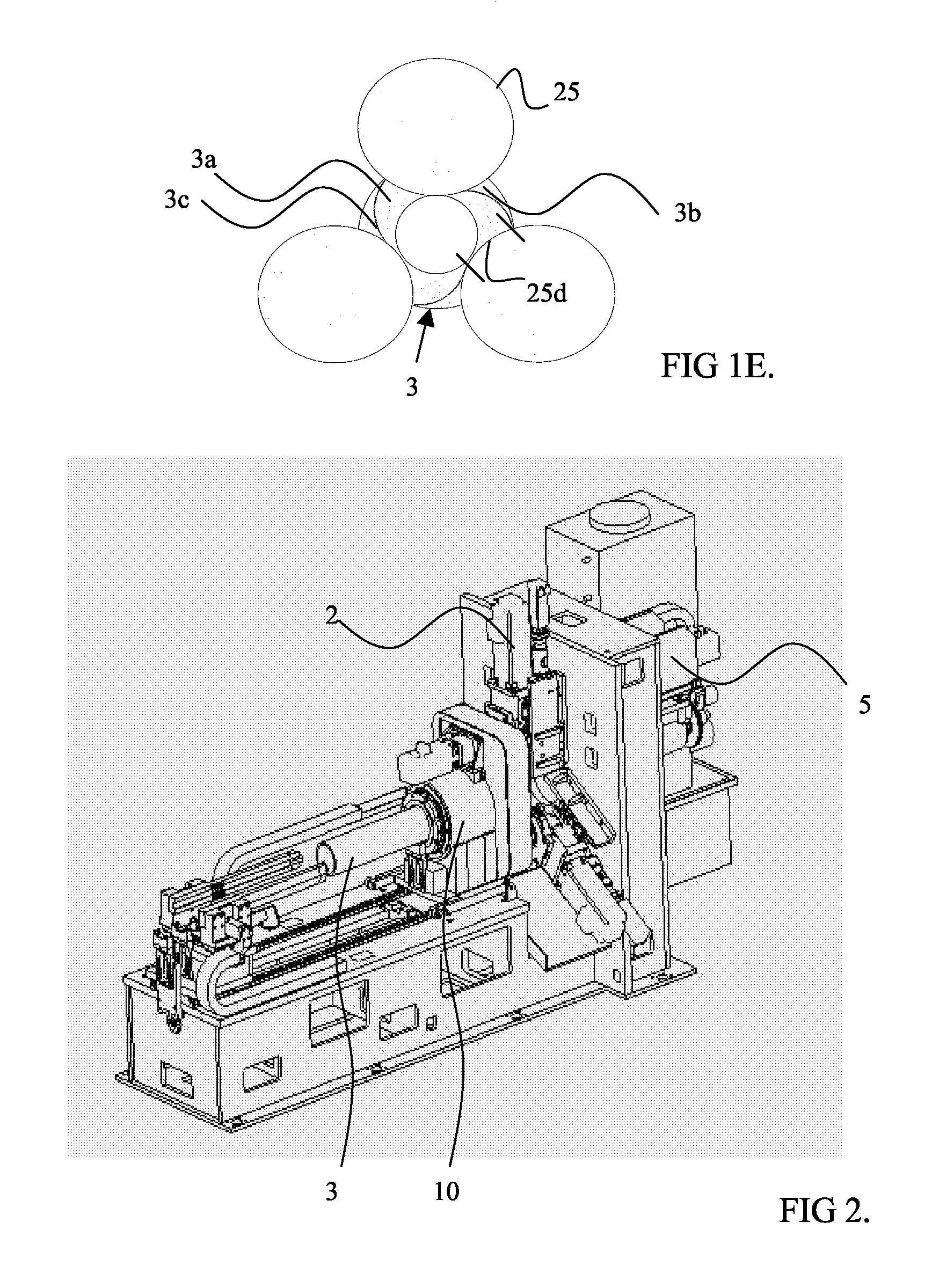Method and device for cutting off a thick-walled pipe
a technology of thick-walled pipes and cutting tools, which is applied in the direction of metal sawing devices, metal sawing equipment, turning equipment, etc., can solve the problems of large blade acquisition costs, material losses, and the inability to remove a sizable chip from the first wall, so as to improve the feed rate of the sawing unit, reduce the risk of blade breaking, and facilitate the effect of implementation
- Summary
- Abstract
- Description
- Claims
- Application Information
AI Technical Summary
Benefits of technology
Problems solved by technology
Method used
Image
Examples
Embodiment Construction
[0026]A reference is made to FIGS. 1A to 1D, which illustrate four stages according to the method. FIGS. 1A to 1D show an embodiment comprising three saws. FIG. 1A shows the initial state, in which the cut-off point of a pipe 3 is brought to a location where it is cut and saws 2 may be started. Before the cutting the pipe 3 is locked in its place. FIG. 1B illustrates the stage at which three saw blades 25 are driven radially towards the centre of the pipe. In FIG. 1C, the inner arrows illustrate the rotating of the pipe 3. The rotating of the pipe is started before the saw blades 25 pass through the inner surface of the pipe. Also, the rotating of the pipe may be started before or immediately after the saws of the sawing units have touched the outer circumference of the pipe 3. From FIG. 1D it appears that the radial driving of the blades 25 towards the centre of the pipe has been stopped after the cutting blade 25 has passed through the inner wall of the pipe 3. The rotating of the...
PUM
| Property | Measurement | Unit |
|---|---|---|
| thickness | aaaaa | aaaaa |
| outer diameters | aaaaa | aaaaa |
| outer diameters | aaaaa | aaaaa |
Abstract
Description
Claims
Application Information
 Login to View More
Login to View More - R&D
- Intellectual Property
- Life Sciences
- Materials
- Tech Scout
- Unparalleled Data Quality
- Higher Quality Content
- 60% Fewer Hallucinations
Browse by: Latest US Patents, China's latest patents, Technical Efficacy Thesaurus, Application Domain, Technology Topic, Popular Technical Reports.
© 2025 PatSnap. All rights reserved.Legal|Privacy policy|Modern Slavery Act Transparency Statement|Sitemap|About US| Contact US: help@patsnap.com



